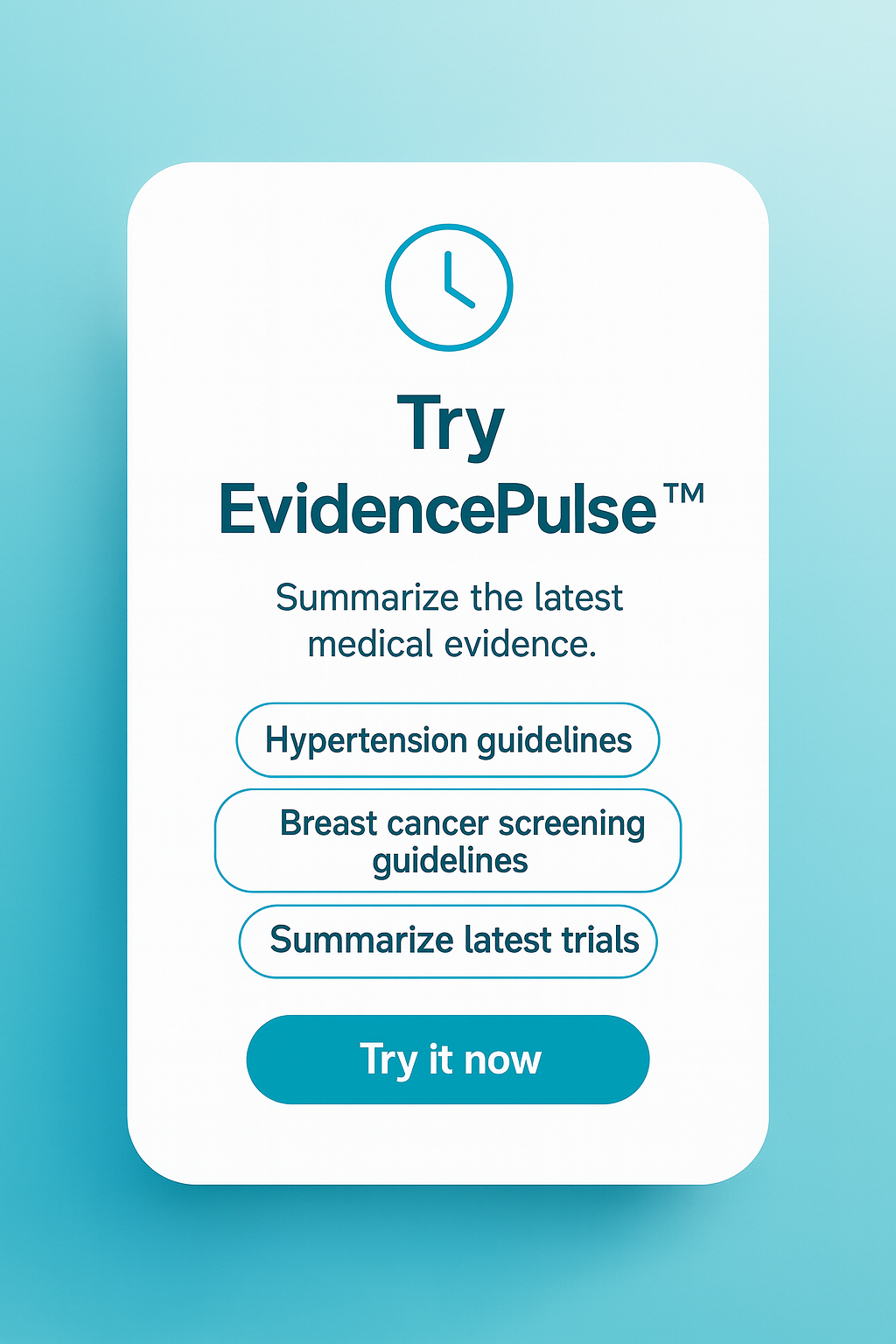2 Minute Medicine Rewind February 3, 2025
1. In this cohort of pregnant individuals without pre-existing conditions, preeclampsia was the primary contributor to the increased risk of severe maternal morbidity (SMM) linked to chronic hypertension.
Evidence Rating Level: 2 (Good)
Hypertension in pregnancy is one of the greatest causes of maternal-fetal morbidity and mortality and cardiovascular disease postpartum. Chronic hypertension has been increasing in prevalence in women of reproductive age during pregnancy. Since women of reproductive age generally have a low risk of chronic hypertension, studies have often excluded it, so the risk of maternal morbidity in those with chronic hypertension is unclear. As a result, the study aimed to assess the rates of severe maternal morbidity (SMM) during delivery hospitalization in pregnancies with hypertension. Included in the study were pregnant individuals with no known comorbidities prior to pregnancy, went to Kaiser Permanente Northern California (KPNC) prior to 14 weeks’ gestation, and delivered a singleton still birth or live birth. Chronic hypertension is defined as systolic blood pressure of 140 mm Hg or greater and diastolic blood pressure (DBP) of 90 mm Hg or greater prior to pregnancy or before 20 weeks’ gestation. While hypertensive disorders of pregnancy include elevations to the same level but occur after 20 weeks’ gestation. A total of 263 518 pregnant individuals (mean [SD] age at delivery, 31.0 [5.3] years) were included in the study. Of these individuals, 13 626 had chronic hypertension (31.5% developed superimposed preeclampsia) while the remaining 249 892 did not (4.7% developed preeclampsia). The SMM rates were varied based on the diagnoses pre- and post-natal. The patients with chronic hypertension had 2 times higher rates per 10 000 births of SMM (416.9 [95% CI, 383.9-451.8]) than those without chronic hypertension (208.8 [95% CI, 203.2-214.5]) (P<.001). The highest SMM rates were in the chronic hypertension with superimposed preeclampsia group (898.3 [95% CI, 814.5-987.8]) and the no chronic hypertension group with preeclampsia (934.3 [95% CI, 882.3-988.3]), while they were lowest in the no chronic hypertension nor preeclampsia group. Comparing all the groups to the reference (no chronic hypertension and no preeclampsia or gestational hypertension), the risk of SMM was significantly higher, although by varying amounts. The risk was highest in no chronic hypertension with preeclampsia (adjusted relative risks (aRR), 5.12 [95% CI, 4.79-5.48]) and chronic hypertension with preeclampsia (aRR, 4.97 [95% CI, 4.46-5.54]), followed by the gestational hypertension group (aRR, 1.78 [95% CI, 1.60-1.99, then the chronic hypertension no preeclampsia group (aRR, 1.17 [95% CI, 1.00-1.36]). Overall, the results of this study provide evidence that preeclampsia is a major contributor to SMM linked to hypertension, in patients with no pre-existing conditions.
1. In this cohort of adults in the United Kingdom (UK), those with a thinner or plumper body size in childhood had an increased risk of adult incident hypertension compared to those who remained of average size.
Evidence Rating Level: 1 (Excellent)
Obesity is a worldwide public health problem affecting individuals across all ages and denominations. It is well known that there is a connection between obesity in adults and increased risk of hypertension, although, the mechanism underlying the connection is not well understood. As such, the goal of this study is to understand the association between weight changes from childhood to adulthood and the incidence of hypertension. Individuals were selected through the UK Biobank. Childhood body habitus was determined by asking the participants how they would compare themselves to the average, while adult weight was measured at baseline. A total of 180 527 participants (59.4% females) were included in the study, with 16 491 developing incident hypertension. Compared to individuals who maintained an average body weight from childhood to adulthood, those who went from average to overweight (hazards ratio (HR) = 1.46, 95% CI = 1.39-1.54) and average to obese (HR = 2.45, CI = 2.31-2.61) had a higher risk of incident hypertension. The individuals with the highest incidence risk were those who went from thin weight in childhood to obese in adulthood (HR = 3.09, 95% CI = 2.88-3.32) once again compared to those who maintained an average weight. The second lowest risk was the individuals who went from a larger to an average size compared to the normal weight group (HR = 1.11, 95% CI = 1.10-1.23). Obesity (mediation proportion: 58.7%, 95% CI: 40.4-74.8%) and overweight body habitus in adulthood played a significant role in mediating the link between a plumper body size in childhood and the development of hypertension. one biological factor mediating the risk of hypertension was the concentration of HDL. A higher concentration of HDL was inversely associated with obesity. Overall, these findings indicate that there is an increased risk of developing hypertension in individuals who were thinner or plumper in childhood, with the highest risk in when obese adults were thinner in childhood.
Ultraprocessed food consumption and obesity development in Canadian children
1. In a cohort of Canadian children, higher ultraprocessed food (UPF) consumption comprised almost half of their energy intake.
Evidence Rating Level: 1 (Excellent)
Ultraprocessed food (UPF) consumption has increased globally, with Canada among the top five countries for the greatest sales of UPF. Many consumers opt for UPF foods since they are easily available, stable for long periods of time, and nutrient dense. One concern is the association between diet and chronic disease, with diet being a modifiable risk factor for many diseases. Studies focusing on the association between UPF consumption and obesity and adiposity are limited in North America. To provide new research, this study sought to explore the association between UPF intake and anthropometric adiposity indicators and obesity status in children. Eligible participants included pregnant women in Edmonton, Manitoba, Toronto, and Vancouver, who gave birth to a child older thran 24 weeks 4 days gestation. The main measurements included a 112-item food frequency questionnaire (FFQ) to measure diet, stadiometer measuring height, skin calipers for skinfold thickness, nonstretchable measuring tape for wait circumference, and a calibrated scale to measure weight. After meeting eligibility, a total of 2217 participants were included in the study (median age, 5.0 (IQR, 5.0-5.1) years at outcome assessment). In children of 3 years of age, UPF comprised 45% of their daily dietary intake while unprocessed and minimally processed foods contributed 37.5%. although they were generally high in the total population, the UPF energy intake was higher in males compared to their female counterparts (46.0% vs 43.9%; P<.001). For every 10% increase in UPF energy contribution, there was a higher BMI (β 0.08; 95% CI, 0.03-0.14) and waist to height ratio (β, 0.07; 95% CI, 0.01-0.12) in males. After performing the regression analysis, the results showed that there was no association between UPF intake and obesity or overweight status in all children. However, there was an association between higher UPF intake and obese or overweight status in males (odds ratio, 1.19; 95% CI, 1.02-1.36). Overall, the high amounts of UPF intake in Canadian children are concerning due to their association with elevated anthropomorphic measurements. Public health aims in the future should focus on promoting healthy food choices in childhood.
1. In this randomized controlled trial, the enhanced recovery after surgery (ERAS) protocol led to a decrease in post-operative length of stay (LOS) and duration until first oral intake in an older group of women undergoing transvaginal pelvic floor reconstruction.
Evidence Rating Level: 1 (Excellent)
Enhanced recovery after surgery (ERAS) is a way to optimize peri-operative management by implementing strategies to reduce patient’s recovery time and decrease surgical stress levels. Previous research implementing the ERAS strategy has been focused on a variety of surgical specialties but one without robust evidence is gynecological surgery, specifically transvaginal pelvic floor reconstruction. To enhance evidence, this randomized clinical trial compared the efficacy of the ERAS protocol compared to conventional treatment in older individuals undergoing transvaginal pelvic floor reconstruction. The primary outcome was length of stay (LOS) after surgery, while the secondary outcomes included rehabilitation factors, time to first oral intake, complications, and cognitive function among others. Patients were selected if they were between 60-80 years of age, had pelvic organ prolapse and an American Society of Anesthesiologists (ASA) status of I or II. The eligible participants were randomly assigned to either the ERAS group or the conventional group in a 1:1 ratio. Each group followed their respective protocol which can be found in extensive detail in the article. Briefly, both groups had their vitals taken throughout, and the anesthesia was focused on keeping them stable. A total of 100 patients were eligible and enrolled in the study. There was a significantly shorter post-operative LOS (9 hours) for the group following the ERAS protocol compared to the conventional protocol group (74.00 (69.00, 96.00) h vs. 65.00 (59.00, 78.25) h, P = 0.001). In the ERAS group, there was a shorter length of time until the first oral intake compared to the conventional group (5.00 (2.50, 7.00) h vs. 3.00 (2.00, 4.00) h, P = 0.010). The incidence of post-operative nausea and vomiting (PONV) at 2- and 12-hours post-operatively, and the amount of post-operative pain within 2 days post-surgery was reduced by the ERAS protocol. Also affected by the ERAS protocol, the duration of post-operative airway support was reduced, allowing for less remifentanil use. One limitation of this study was the generalizability due to the use of a single cite. Despite this, the results indicate that the ERAS protocol leads to shorter post-operative LOS, and oral intake duration in this randomized controlled trial.
1. In this randomized controlled trial, the fresh embryo transfer group had a higher rate of live births compared to the frozen embryo transfer group, in women with a low prognosis of a successful pregnancy using in vitro fertilization (IVF).
Evidence Rating Level: 1 (Excellent)
In vitro fertilization (IVF) has progressed bounds since first being introduced, however, many women are still struggling. Specifically, women with 9 or fewer oocytes retrieved, or those with poor ovarian reserve (defined as antral follicle count <5 or serum anti-Müllerian hormone level <8.6 pmol/L) are considered to have poor prognosis for successful IVF. To give themselves a better chance of a successful pregnancy, many people have adopted embryo conservation through elective freezing of all embryos then a planned frozen embryo transfer. Although previous studies have shown evidence for frozen versus fresh embryo transfer, there have been a lack of randomized controlled studies. To provide further evidence, this study evaluated if a freeze-all strategy produces a greater number of live births than fresh embryo. Eligible individuals included women of any age who received their first or second cycle of IVF. Although there were no age exclusion criteria, the randomization was stratified based on age (<35 years or ≥35 years) along with study site. Each study site had physicians determining possible interventions, number of embryos, and any specific regimens. The primary measure of success was the occurrence of a live birth (≥28 weeks of gestation) after the initial embryo transfer. The study randomized 838 eligible participants. Of the 419 women in the frozen embryo transfer group, 132 (32%) had a live birth, while 168 of 419 (40%) had a live birth in the fresh embryo transfer group (relative ratio 0.79 (95% CI 0.65 to 0.94); P=0.009). The frozen embryo transfer group also had a lower rate of pregnancy compared to the fresh embryo transfer group (39% (164 of 419) vs 47% (197 of 419); relative ratio 0.83 (0.71 to 0.97); P = 0.02). Pregnancy loss was greater in the frozen versus fresh embryo transfer group (31% (61 of 196) vs 23% (50 of 221); relative ratio 1.38 (1.00 to 1.90); P=0.05). Even after one year of randomization, the cumulative live birth rate was lower in the frozen embryo transfer group (44% (185 of 419)) compared to the fresh embryo transfer group (51% (215 of 419)) (relative ratio, 0.86 (0.75 to 0.99). In conclusion, fresh embryo transfer resulted in a higher number of live births, and cumulative live birth rate within one year of randomization, than frozen embryo transfer. In the future, women with low prognosis for IVF should consider fresh embryo transfer as it may be a better choice.
Image: PD
©2024 2 Minute Medicine, Inc. All rights reserved. No works may be reproduced without expressed written consent from 2 Minute Medicine, Inc. Inquire about licensing here. No article should be construed as medical advice and is not intended as such by the authors or by 2 Minute Medicine, Inc.









